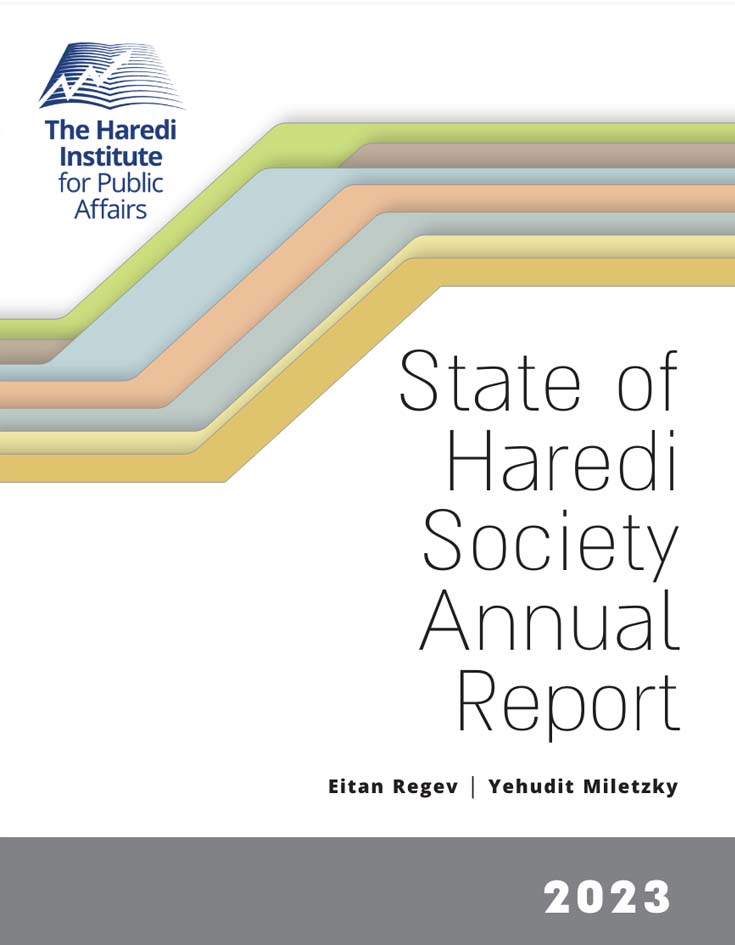
State of Haredi Society Annual Report 2023
Eitan Regev | Yehudit Miletzky

The establishment of the Wohl Data Center and the publication of the State of Haredi Society annual report for 2023 was made possible through the generous support of the Wohl Foundation.


Demographics
Key Trends
Currently, the growth rate of the Haredi population stands at about 3.9% a year, a pace consistent with the low forecasts of the Central Bureau of Statistics. According to these forecasts, the growth rate is expected to decline gradually over the next decade to 3% per year and later to 2% per year.
Given its current size (lower than previous estimates) and the expected growth rate, by 2065 the Haredi population is expected to number about 4 million people, while the rest of the population in Israel will number about 12 million people, so the predicted share of the Haredi population will be only about 25% of the country’s population.
The age of marriage in Haredi society has been rising: since 2014, the share of married women in the 18-24 age group has declined from 46% to 36%.

Housing
Key Trends
In recent years, there has been a slight decline in the share of homeowners in Haredi society, from about 69% in 2014 to about 68% in 2021.
In the past five years, there has been a slight decline in the share of Haredi households taking out a mortgage, from 45% to about 40% – a level similar to that observed in 2014. Among non-Haredi Jewish households, the share of households taking out mortgages declined
gradually from 33% in 2014 to about 28% in 2021.
In recent decades, the share of home purchases by Haredim in the central district has dropped from 35% to 20%. In the southern, northern, and Haifa districts, the combined rate increased from 20% to 40%, and in the Jerusalem district it remained about 30%.

Employment
Key Trends
After six years of stagnation, the employment rate of Haredi men has shown a marked upward trend in the past two years, rising from 51% to 55% between 2021-2023.
In the past decade, Haredi women have narrowed the gap in employment rates between themselves and non-Haredi Jewish women from 10 to 2 percentage points.
The wage gap between Haredi and non-Haredi Jews has widened over the years. In 2005, the average salary of a Haredi man was about 70% of that of a non-Haredi Jewish man, whereas today, it stands at only 50%.
Wage gaps between Haredi women and non-Haredi Jewish women have remained stable over the years.

Education
Key Trends
The share of Haredi pupils in the overall education system rose from 13% in 2000 to 20% in 2023 and continues to grow. The share of Haredi pupils enrolled in the state-Haredi education system has grown from about 1% in 2014 to about 5% in 2023.
The share of Haredi pupils studying in State-Haredi institutions grew from 1% in 2014 to 4% in 2023.
The oldest educational frameworks in the Haredi sector – independent education, Maayan Hachinuch Hatorani, and exempted institutions – have maintained stability in their share of pupils in the past decade.
The share of Haredi pupils in several mixed cities rose sharply between 2000 and 2023: in Beit Shemesh, the share of Haredi pupils rose from 27% to 75% of all pupils in the city; in Arad, from 10% to 51%; in Ofakim, from 24% to 50%; and in Kiryat Gat, from 9% to 32%.
The share of Haredi pupils eligible for a matriculation certificate increased between 2015 and 2022 from 21% to 25%, and among boys, the rate almost doubled, from 2.6% to about 4.7%.

Higher Education
Key Trends
The share of degree holders among Haredi men aged 25-49 has risen by only 1.5 percentage points in recent decades.
The share of degree holders among Haredi women aged 25-49 has risen by about 9 percentage points in the past two decades.
In recent years, the share of academic degree holders among Haredi men from the Chabad stream has surged, currently standing at about 9%. By contrast, among Hasidic men, the share of academic degree holders is only about 2%.
The number of male Haredi students in technological colleges has increased fivefold in the past decade and currently stands at about 1,100.
The number of female Haredi students in technological colleges has increased 2.5-fold in the past decade and stands at about 3,700.

Household Economy
Key Trends
The average income from allowances and government subsidies of Haredi households grew at the lowest rate among population groups, an increase of 38% between 2014 and 2021, compared to 55% for non-Haredi Jewish households and 56% for Arab households.
During these years, the average net income from work of the Haredi household grew by the largest rate: 24%, compared with an increase of 13% in the income from work of Arab households and only 2% of non-Haredi Jewish households.
Tax payments by Haredi households increased at the highest rate of all sectors: 30% between 2014 and 2021, compared with 5% by nonHaredi Jewish households and 4% by Arab households.

Digitization
Key Trends
The share of Haredi households connected to the Internet rose from 39% in 2014 to 69% in 2022.
The share of Haredim who own a smartphone has doubled in the past eight years, from 18% in 2014 to 36% in 2022.
The share of Haredim who use WhatsApp rose from 29% in 2020 to 37% in 2022.



